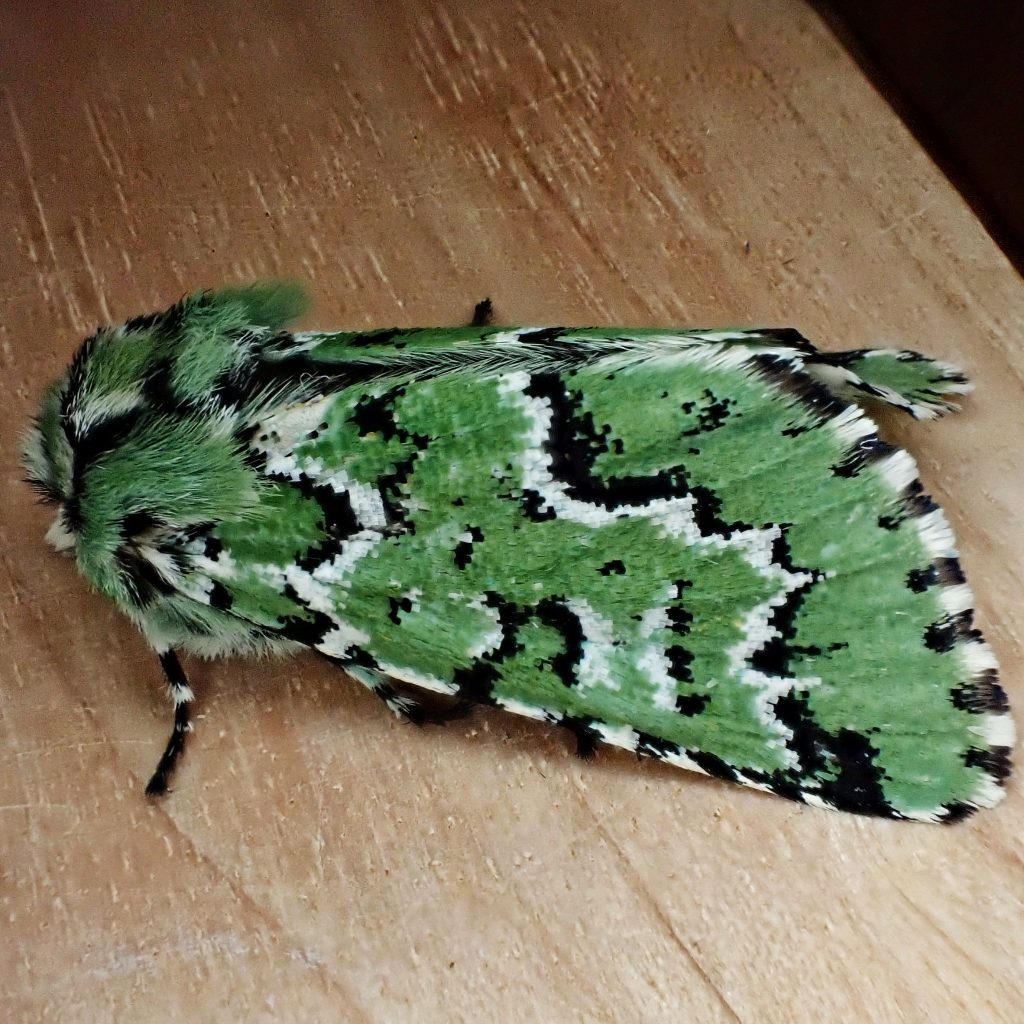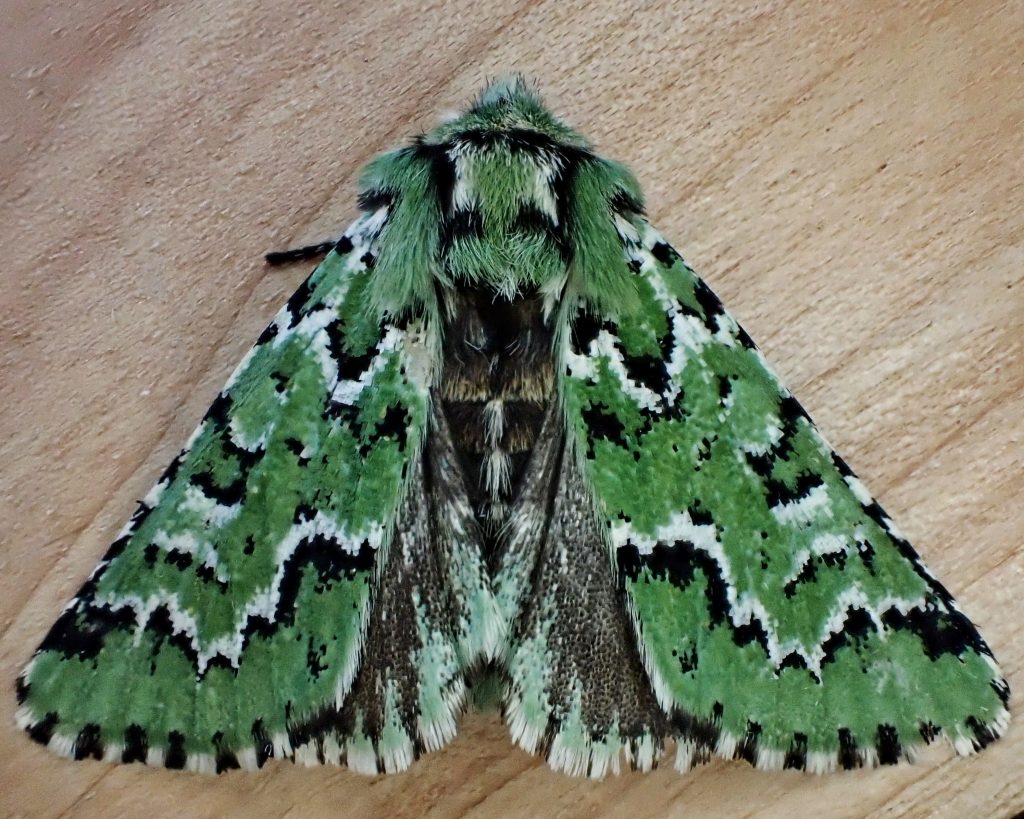
This is a festive looking Noctuid moth, with a simple but elegant pattern, and a simple 3 color palette. There is nothing baroque about Feralia deceptiva, but they are stunning nonetheless. They are settlers on my sheets, and even when I’ve seen the same moth 10 times in a night there is still an urge to take another photograph.
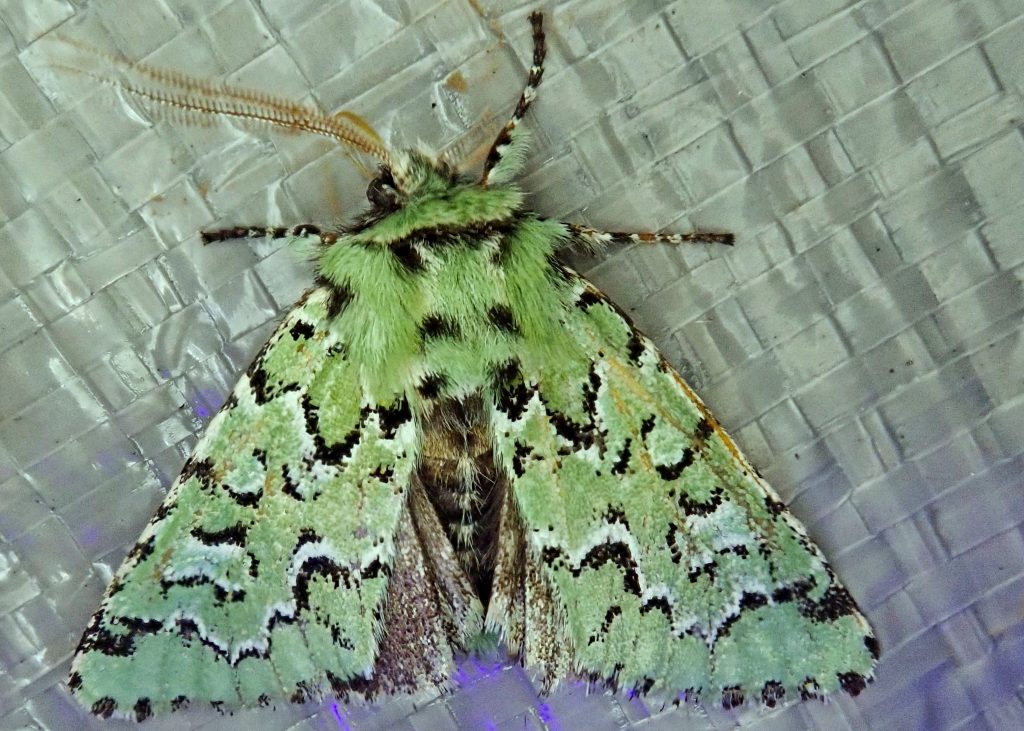
They are regular guests when I run early season lights in rural forests, although they are never abundant, but they seldom come around when I set up at the few urban/suburban conifer forests I frequent. Possibly they are pollution intolerant, or maybe they aren’t willing/able to bridge the gap between fragmented habitats. And maybe my sample size is too small to actually be seeing patterns.
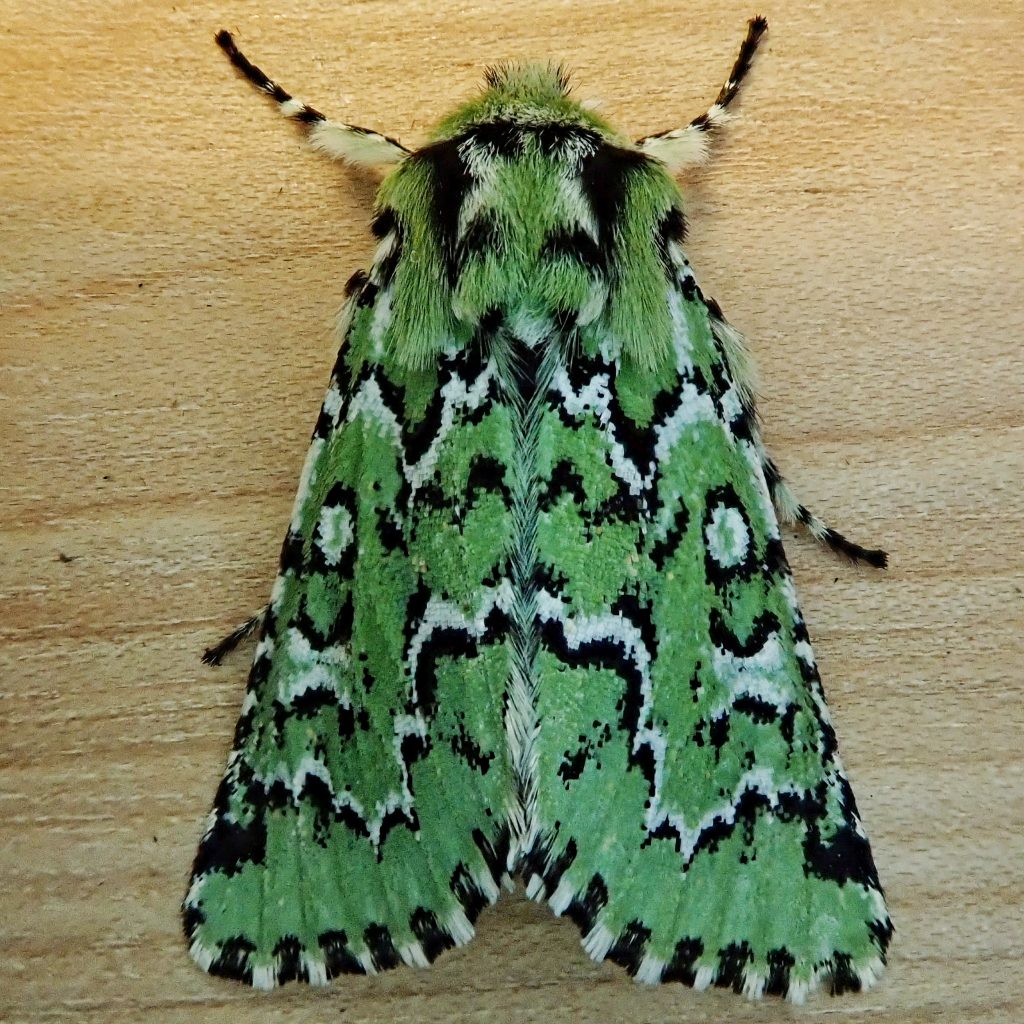
There is something very compelling and yet satisfying about looking at these moths. When one comes to my lights I feel an excitement, almost as though a mystery may be unveiled. But possibly that is just because, due to some particular quality to their shading, they are one of the very few things on the planet that this color blind guy looks at and says ‘Greeeen!’
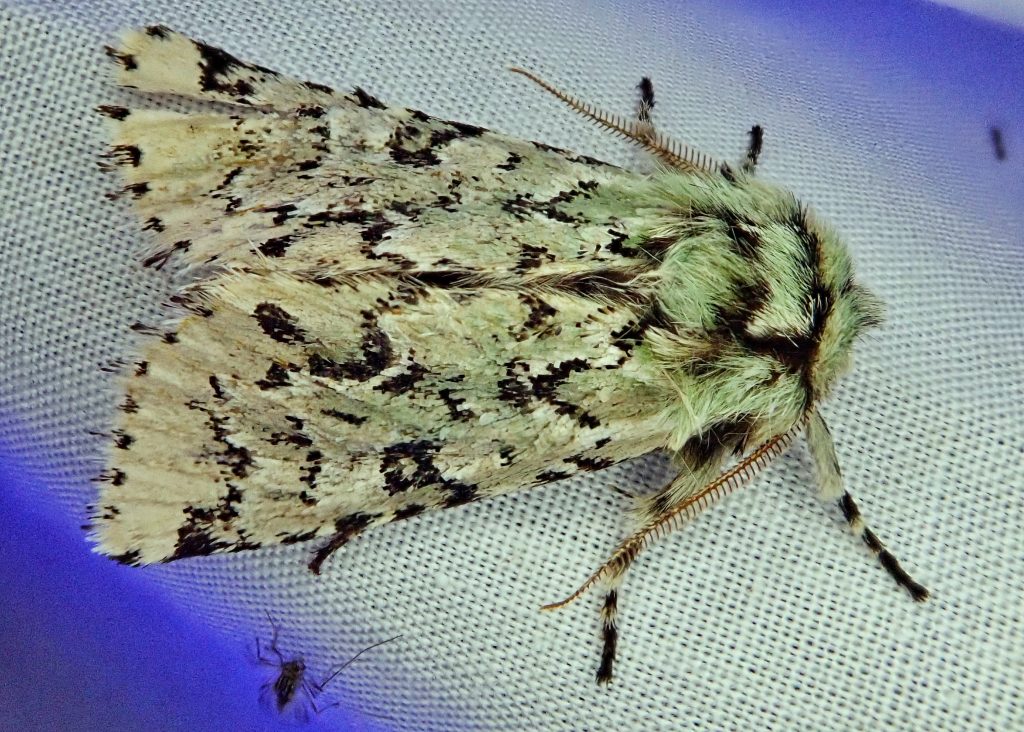
Description-Medium sized moth (fw length 18-19mm) whose forewings are green with black and white markings; the transverse lines are jagged, narrow, black and white; orbicular and reniform spots are delimited by narrow black and white lines; reniform spot is open on the outside and inside; the margin has black checks with white spaces; thorax outlined on black and white; hindwing dark grey.
Similar species–F. comstocki and F. jocosa have much more black amongst the green, giving them a mottled look.
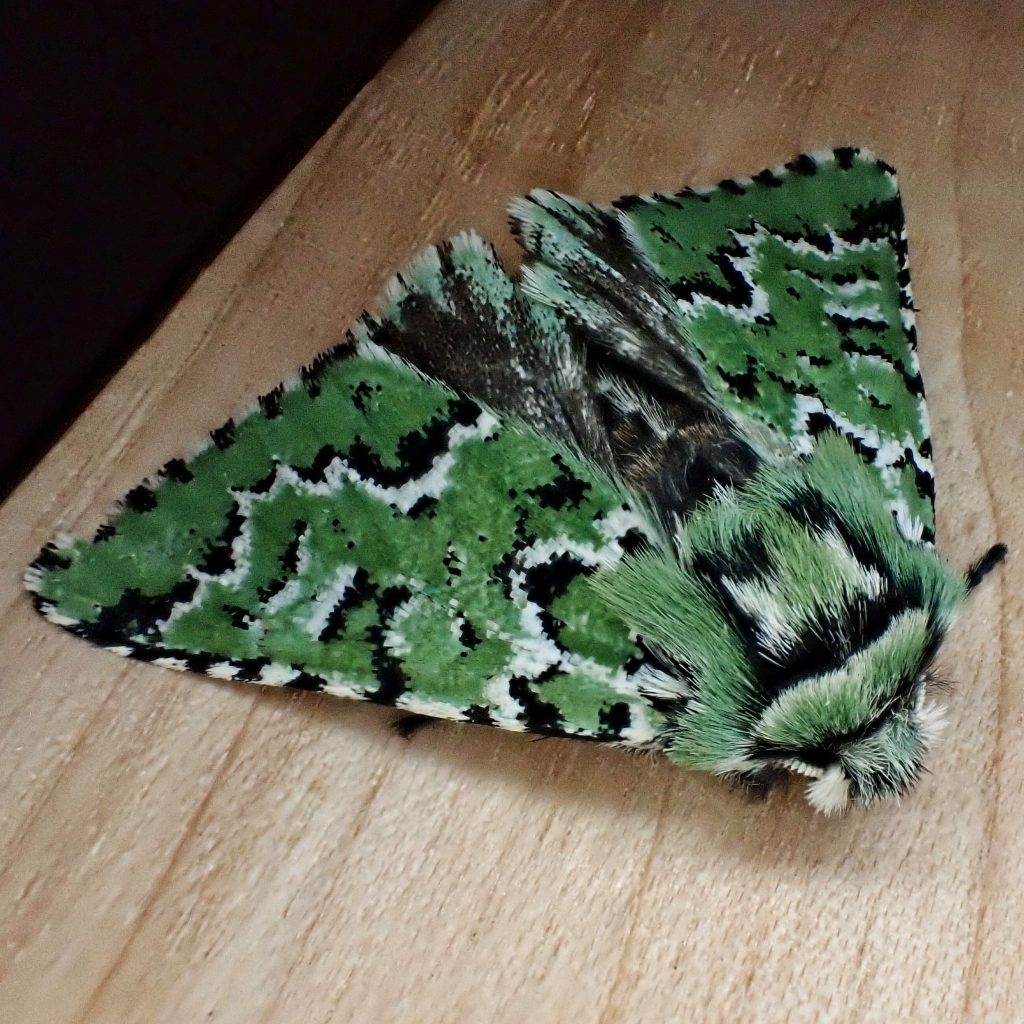
Habitat– Moist to mesic conifer forests up to 5000’ elevation.
Range-West Coast endemic; found in our region from the east slope of the Cascades to the Pacific Ocean, and in nw California.
Eats-Larval host is primarily Douglas fir.
Reproduction-Eggs laid in mid spring; larvae overwinter as pupae, and emerge as adults in early spring.
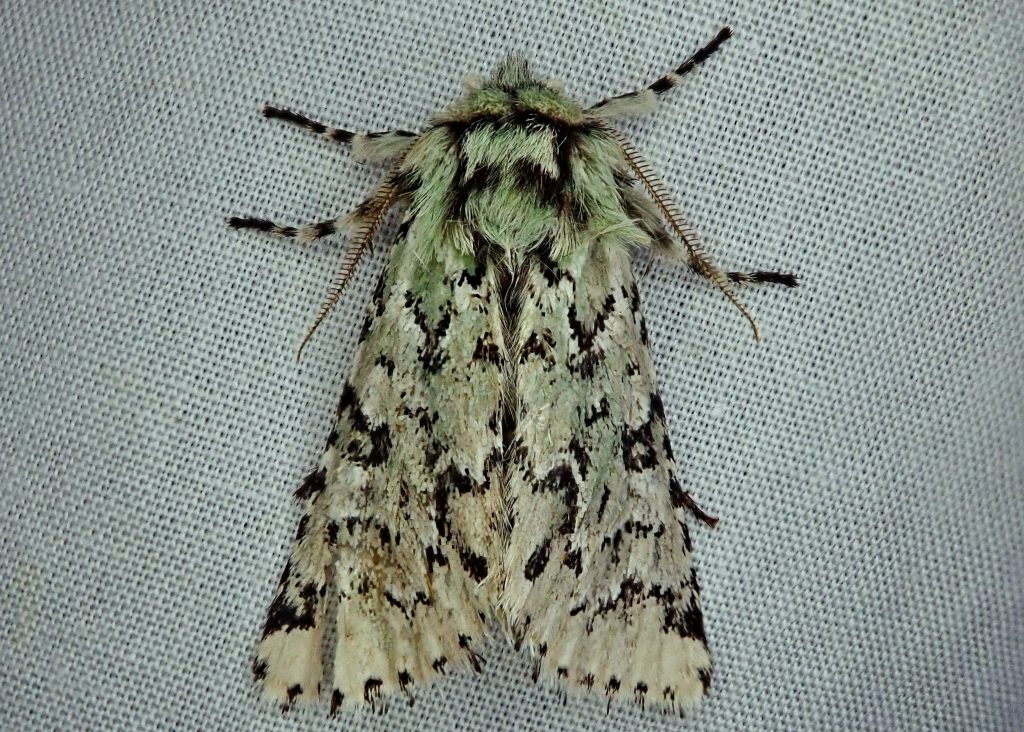
Adults active– Late February to early May.
Etymology of names– Feralia means ‘of the dead’ in Latin. This may be a reference to the Roman holiday Feralia, which attempted to propitiate the spirits of the dead with offerings of wreaths, grain, salt, wine soaked bread, and violets. But Grote (1874) does not explicate his reasoning. The specific epithet deceptiva comes from the Latin for ‘to deceive’. I cannot access James McDunnough’s original description, but my guess is that deceptiva was a reference to the similarity of this species to F. jocosa, a very similar moth whose specific epithet means ‘facetious’ in Latin.
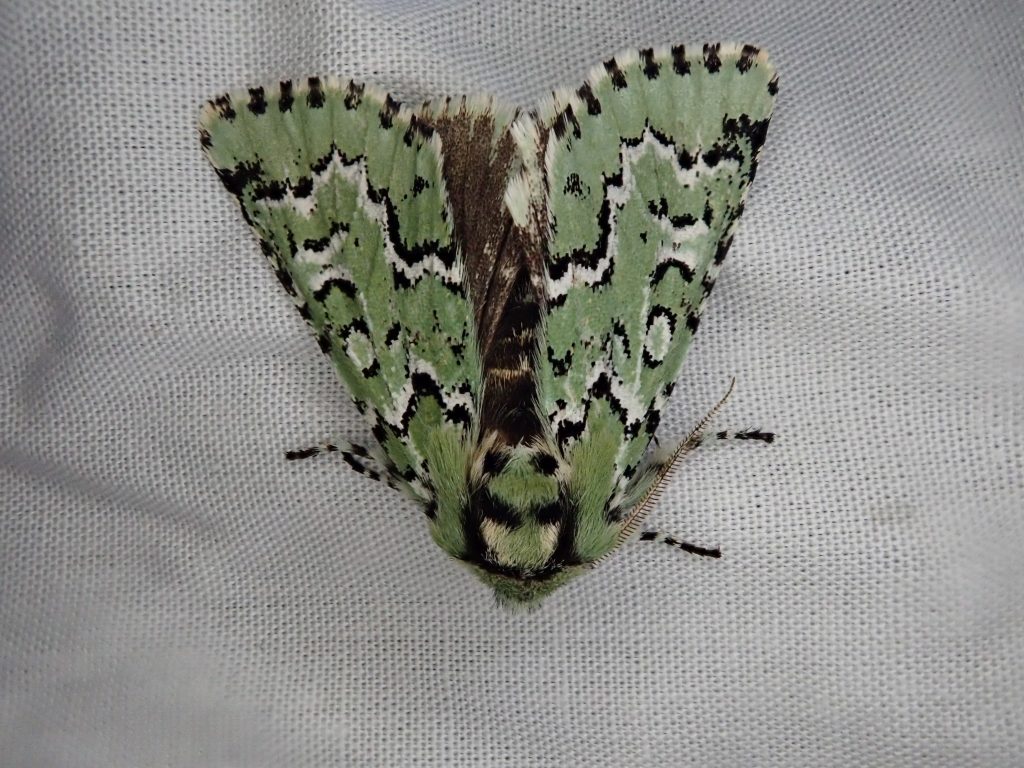
https://bugguide.net/node/view/45474
http://www.nearctica.com/moths/noctuid/psaphida/feralia/feralia_deceptiva.htm
http://mothphotographersgroup.msstate.edu/species.php?hodges=10006
